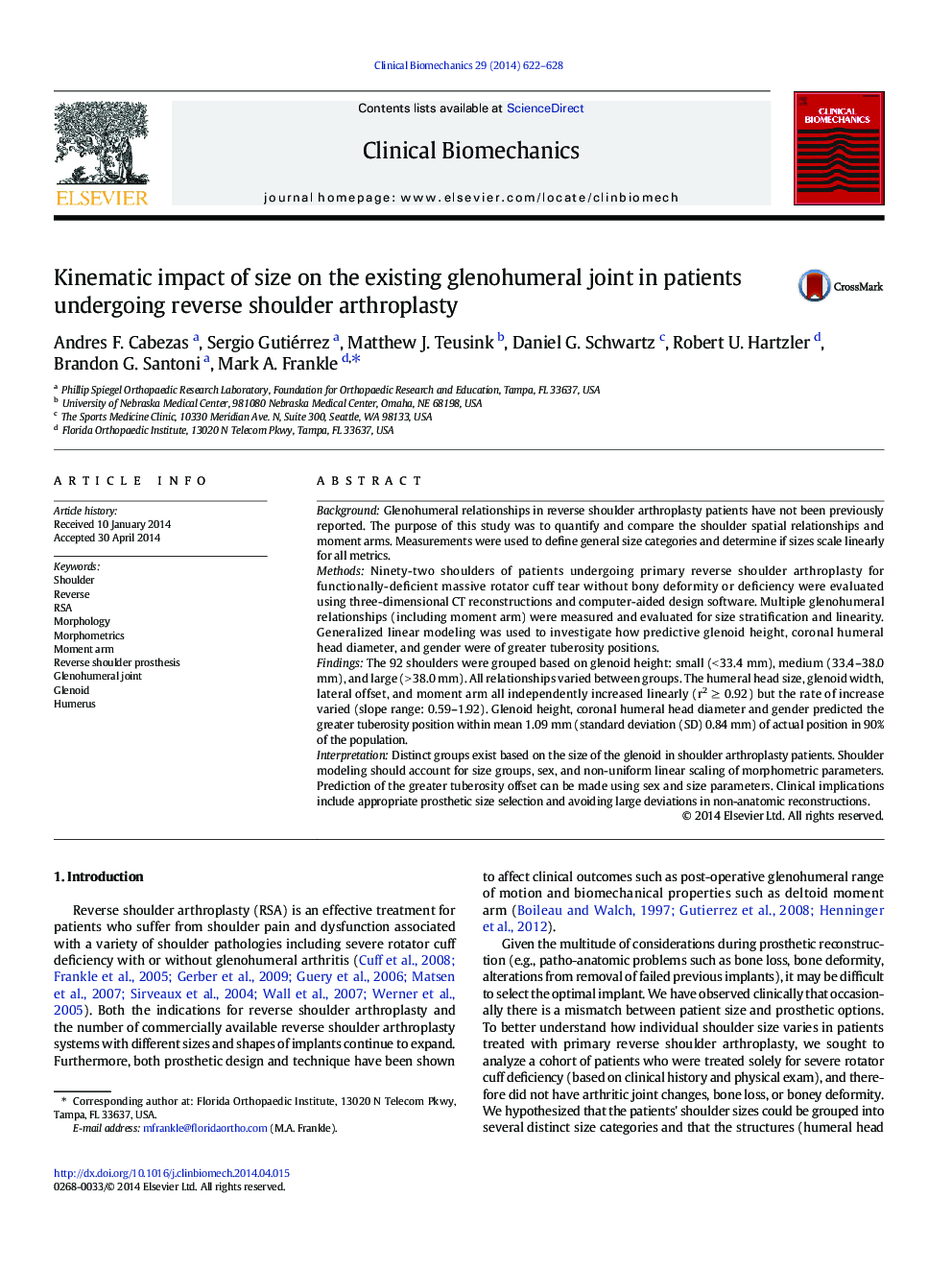| کد مقاله | کد نشریه | سال انتشار | مقاله انگلیسی | نسخه تمام متن |
|---|---|---|---|---|
| 4050430 | 1264931 | 2014 | 7 صفحه PDF | دانلود رایگان |
• Scapula and humeral anatomic measurements and glenohumeral relationships were quantified in a reverse shoulder arthroplasty patient population.
• Morphology data was used to develop criteria for distinct size categories (small, medium, large) for patients.
• Individual morphology metrics were found to scale linearly. However, shoulder morphology does not increase proportionally with size.
• A predictive model of the native greater tuberosity medial-lateral position was generated based on patient size category, humeral head coronal diameter, and sex of patient.
• This data can be used to assist surgeons in preventing shoulder-prosthesis size mismatch and neurologic complications related to soft tissue tension.
BackgroundGlenohumeral relationships in reverse shoulder arthroplasty patients have not been previously reported. The purpose of this study was to quantify and compare the shoulder spatial relationships and moment arms. Measurements were used to define general size categories and determine if sizes scale linearly for all metrics.MethodsNinety-two shoulders of patients undergoing primary reverse shoulder arthroplasty for functionally-deficient massive rotator cuff tear without bony deformity or deficiency were evaluated using three-dimensional CT reconstructions and computer-aided design software. Multiple glenohumeral relationships (including moment arm) were measured and evaluated for size stratification and linearity. Generalized linear modeling was used to investigate how predictive glenoid height, coronal humeral head diameter, and gender were of greater tuberosity positions.FindingsThe 92 shoulders were grouped based on glenoid height: small (< 33.4 mm), medium (33.4–38.0 mm), and large (> 38.0 mm). All relationships varied between groups. The humeral head size, glenoid width, lateral offset, and moment arm all independently increased linearly (r2 ≥ 0.92) but the rate of increase varied (slope range: 0.59–1.92). Glenoid height, coronal humeral head diameter and gender predicted the greater tuberosity position within mean 1.09 mm (standard deviation (SD) 0.84 mm) of actual position in 90% of the population.InterpretationDistinct groups exist based on the size of the glenoid in shoulder arthroplasty patients. Shoulder modeling should account for size groups, sex, and non-uniform linear scaling of morphometric parameters. Prediction of the greater tuberosity offset can be made using sex and size parameters. Clinical implications include appropriate prosthetic size selection and avoiding large deviations in non-anatomic reconstructions.
Journal: Clinical Biomechanics - Volume 29, Issue 6, June 2014, Pages 622–628
